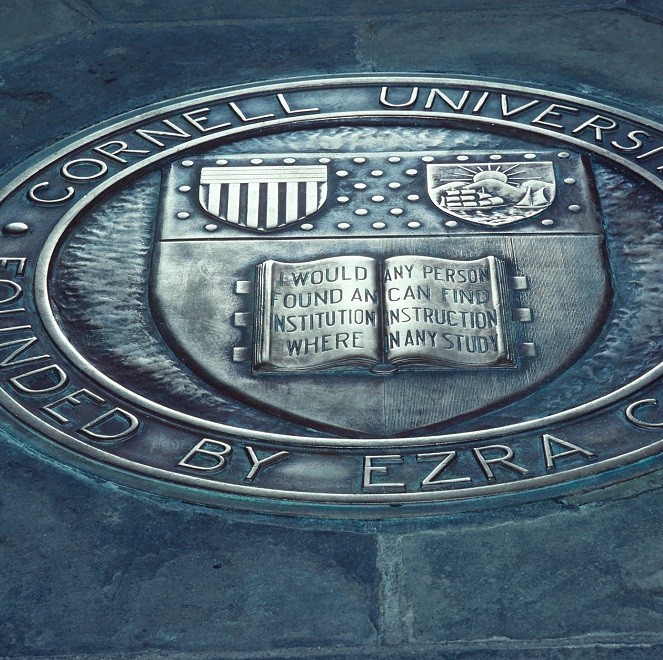News and Events
Full listing
January 26, 2022
Seven Cornell faculty members have been elected fellows of the American Association for the Advancement of Science (AAAS), the world’s largest general scientific society.
The association elected 564 new fellows in 2021, honoring their efforts to advance research and its applications in scientifically or socially distinguished ways. New fellows will be presented with an official certificate and a gold and blue (representing science and engineering, respectively) rosette pin.
January 13, 2022
The IEEE Board of Directors has named Professor Huili Grace Xing an IEEE Fellow, recognized for contributions to GaN high-electron-mobility transistors. Xing is the William L. Quackenbush Professor of Engineering and Associate Dean on Research and Graduate Studies.
Xing’s research is focused on fundamental work toward next generation electronic materials and devices. “We are currently engaged in doping science in polar semiconductors, ultrawide bandgap semiconductors for energy-efficient and agile power electronics, deep UV light emitters, quantum materials and technologies for secure communication and complex problem solving,” Xing said.
January 11, 2022
With a little twist and the turn of a voltage knob, Cornell researchers have shown that a single material system can toggle between two of the wildest states in condensed matter physics: the quantum anomalous Hall insulator and the two-dimensional topological insulator.
By doing so, they realized an elusive model that was first proposed more than a decade ago, but which scientists have never able to demonstrate because a suitable material didn’t seem to exist. Now that the researchers have created the right platform, their breakthrough could lead to advances in quantum devices.
The team’s paper, “Quantum Anomalous Hall Effect from Intertwined Moiré Bands,” published Dec. 22 in Nature. The co-lead authors are former postdoctoral researchers Tingxin Li and Shengwei Jiang, doctoral student Bowen Shen and Massachusetts Institute of Technology researcher Yang Zhang.
December 22, 2021
A crystal structure that combines a semiconductor and superconductor is a tantalizing prospect to create energy-efficient computers, or quantum computers, which leverage the unique quantum mechanical properties of superconductors. Superconductors carry current with little to no energy loss, while semiconductors offer the control and versatility that has made them an essential feature of transistor technology.
The challenge is how to combine the two states and make sure you get the best of both electrical worlds – and can still isolate them.
A collaboration between researchers from Cornell and the Paul Scherrer Institute in Switzerland grew a thin film, only a few atomic layers in thickness, of the one of the oldest known superconductors, niobium nitride, on top of gallium nitride, a semiconductor that in recent decades has become a vital component in optical and power electronics. For the first time, the researchers have successfully measured the electronic properties of the junction between the two materials, a crucial step toward creating hybrid superconductor-semiconductor quantum devices.
December 13, 2021
Marika Nell, Ph.D. ’20, began her civil and environmental engineering doctoral program to discover technical solutions to environmental problems and follow an academic career track. But upon diving into dissertation research, she envisioned a different career – one in which she could directly impact energy and environmental policy.
December 8, 2021
From the very beginning around 20 years ago, “Cornell dots” – silica-encased fluorescent nanoparticles, developed in the lab of Ulrich Wiesner, the Spencer T. Olin Professor of Engineering – were seen as having great potential as biological markers. C Dots were also touted as having possible applications in displays, optical computing, sensors and microarrays such as DNA chips.
The technology has been refined and improved since its unveiling in 2005. C Dots have been used to create the world’s smallest laser and, in collaboration with researchers at Memorial Sloan Kettering (MSK) in New York City, have shown the diagnostic ability to find tumors; a new version – Cornell Prime Dots, or C’Dots, synthesized in water – was armed with nano-sized antibody fragments, and in separate studies actually induced, without attaching a drug, a form of cell death in tumors.
Now C’Dots, proven safe and effective in three previous diagnostic human clinical trials, have just begun their first therapeutic trial, having been further developed by Elucida Oncology, Inc., a New Jersey-based biotechnology company co-founded by Wiesner.
November 29, 2021
Young researchers applauded for exceptional work on crystal growth, bulk metallic glasses, memristive devices
AIP Publishing is pleased to announce the winners of the 2021 APL Materials Excellence in Research Award, who were selected for their work on crystal growth, bulk metallic glasses, and memristive devices. As a distinction for young researchers, the award is given to authors who publish exceptional science in the journal and are under 40 years of age.
November 29, 2021
Three professors in the Department of Physics in the College of Arts and Sciences have been elected fellows of the American Physical Society (APS): Kyle Shen, Kin Fai Mak and Lawrence Gibbons.
The APS Fellowship Program recognizes members who have made exceptional contributions to the physics enterprise in physics research, important applications of physics, leadership in or service to physics, or significant contributions to physics education. APS fellowship is limited to no more than 0.5% of all APS members in a given year.
November 8, 2021
For his work developing new, more efficient ways of manipulating the magnetization in magnetic materials, F.R. Newman Professor of Physics Daniel C. Ralph has been awarded the 2022 James C. McGroddy Prize for New Materials by the American Physical Society (APS).
The McGroddy Prize recognizes outstanding work in the science and application of new materials, including the discovery of new materials, the observation of new phenomena in known materials, and theoretical and experimental work which contributes to the understanding of such phenomena.
November 1, 2021
November 2021: Research led by KIC Graduate Fellow Jenniffer Bustillos has demonstrated a new technique to improve the strength and ductility of 3D printed metal alloys. By deliberately adding more defects during printing and then harnessing the energy of those defects as they were removed with hot isostatic processing, the research team improved the structure of the material.


